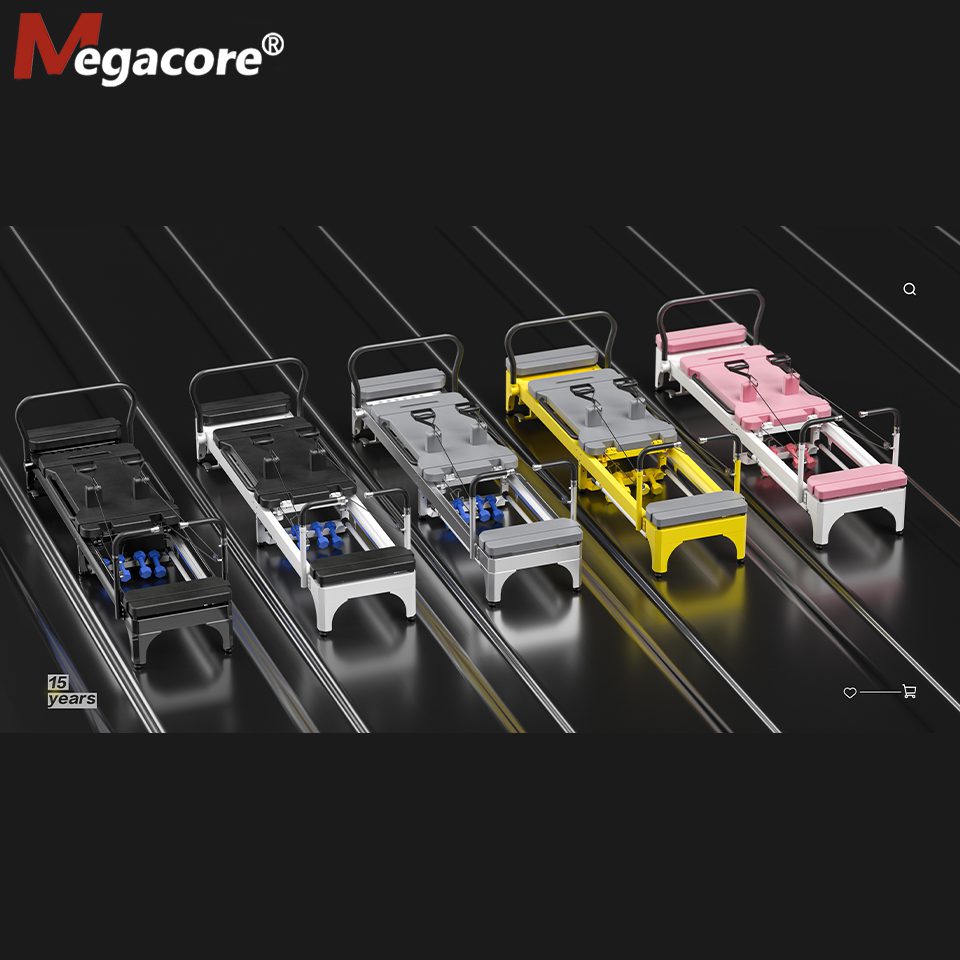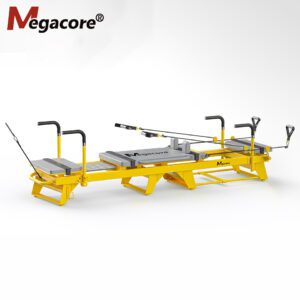Pilates reformers are an excellent tool for a full-body workout that engages and strengthens different muscle groups. Springs are one of the essential components of the Pilates reformer that controls the resistance of the carriage, which provides the workout’s intensity. Choosing the right springs for your heavy duty Pilates Reformer is crucial to achieving optimal results from your workout program. In this article, we will explore how to choose the right springs for your Pilates reformer and the factors to consider when making the purchase.
Factors to Consider When Choosing Springs for Your Pilates Reformer
Before choosing the springs for your heavy duty Pilates reformer, it is essential to consider several factors. These include:
- Resistance Level
The resistance level of the spring is one of the most important factors to consider when purchasing a spring for your Pilates reformer. Depending on your fitness level, you need to choose the appropriate spring with the right resistance level. Heavier resistance springs provide more resistance, making the workout more challenging and effective for advanced fitness levels. On the other hand, light resistance springs are ideal for beginners or people who want to work on rehabilitation.
- Number of Springs
The number of springs on your Pilates reformer determines the resistance of the carriage. Reformer machines come with different numbers of springs, which offer varying levels of resistance. It is important to consider the number of springs you want on your reformer based on your fitness goals.
- Quality of the Springs
The quality of the springs is another important consideration when purchasing a spring for your Pilates reformer. The higher the quality of the spring, the longer it will last, and the better it will perform. Choose springs made from high-quality materials that can withstand regular use.
Now that you know the factors to consider before purchasing a spring for your Pilates reformer let’s look at how to choose the right spring:
- Assess Your Fitness Level
Assess your fitness level to determine the best spring for you. If you are a beginner, go for lighter springs; if you are advanced or intermediate, choose heavier resistance springs.
- Determine Your Workout Goals
Consider your workout goals, whether you want to build muscle, improve flexibility, or engage in rehabilitation. Different types of springs offer varying levels of resistance and are designed to help you achieve specific fitness goals.
- Experiment
Experiment with different springs to determine what works best for you. Try using heavier springs or lighter springs, one at a time, to determine how the resistance affects your workout.
Conclusion
Choosing the right spring for your heavy duty Pilates reformer is key to achieving optimal results from your exercises. Consider factors such as resistance level, number of springs, and quality of the springs before making a purchase. To ensure that you get the best springs for your fitness level, workout goals, and Pilates reformer, consult a professional in the fitness industry who has experience with Pilates Reformers. With the right springs, you can make the most of your Pilates reformer workouts, improve your physical health, and achieve your fitness goals.
Title: Can Heavy Duty Pilates Reformers Improve Posture and Spinal Alignment?
Poor posture and spinal alignment can lead to chronic pain, discomfort, and other health issues. The good news is that regular exercise can help improve posture and spinal alignment, and Pilates reformers are an excellent tool for this. Pilates reformers use resistance training to strengthen the muscles around the spine and pelvis, which can improve posture and spinal alignment. In this article, we explore how heavy duty Pilates reformers can improve posture and spinal alignment.
How Pilates Reformers Work
The Pilates reformer is a piece of equipment designed to offer a full-body workout using resistance training. It consists of a platform that slides along a frame, with springs and straps that provide resistance during exercise. The resistance provided during exercises helps to strengthen the muscles and connective tissues around the spine and pelvis, leading to better posture and spinal alignment.
Improved Posture
Pilates reformers can help improve poor posture by targeting muscles around the spine and pelvis. Pilates exercises such as spinal extension, abdominal work, and side bends help to improve alignment by strengthening the muscles that support good posture. Strengthening these supportive muscles helps prevent poor posture by preventing muscles from becoming overworked and tense. Exercises with resistance bands can help to improve the strength of shoulder muscles, upper back, and neck, which reduces stress on the spine, leading to better posture.
Spinal Alignment
Pilates reformers are an excellent tool for improving spinal alignment. The reformer’s sliding platform allows for smooth, low-impact movements, making it an ideal tool to stretch and strengthen muscles around the spine. Exercises with the Pilates reformer that focus on core stability engages muscles that support spinal alignment. This results in better lumbar support, which helps to prevent lower back pain and discomfort. Engaging in Pilates exercises with the reformer’s help, reduces strain on the upper back, neck, and shoulders, which also contributes to an improvement of spinal alignment.
Conclusion
Heavy duty Pilates reformers are an ideal tool for improving posture and spinal alignment. The reformer’s low-impact exercises using resistance training can strengthen the muscles and connective tissues around the spine and pelvis, leading to better posture and spinal alignment. Regular engagement in Pilates reformer exercises can help to prevent poor posture by strengthening supportive muscles. By engaging in the exercises on the reformer regularly, it can also reduce strain on upper and lower portion of the back, neck, and shoulders making it more convenient for everyday life activities. Improvements in spinal alignment help to prevent and alleviate discomfort, such as lower back pain and stiffness while increasing pain-free mobility.





